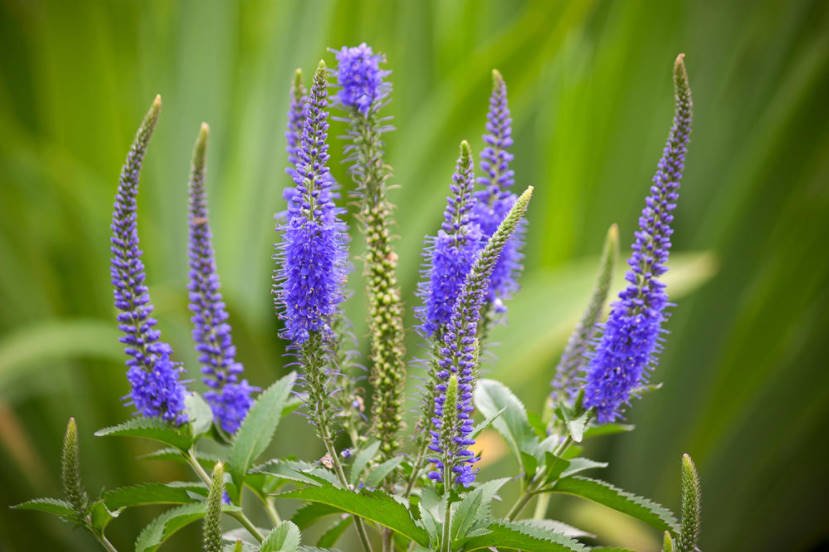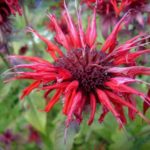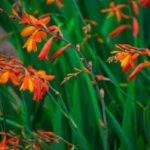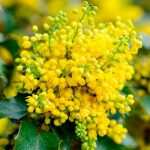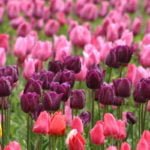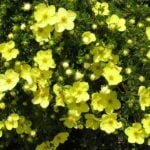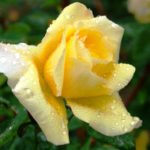Let’s talk about Veronica. Such seemingly simple flowers, but at the same time very beautiful and lovely. I especially like them for their blue color because not so many flowers in our gardens have blue shades.
Features
Let’s get acquainted with these flowers. Why so called a plant? The explanations are: perhaps in honor of the Saint named Veronica, and scientists suggest that the name was formed from the Latin words “vera unica”, which means the real drug (because Veronica and medicinal properties). Be that as it may, this word should be pronounced with emphasis on the second syllable.
The genus Veronica is large (almost 300 species), is part of the plantain family, there are its representatives in all parts of the world, but most of them in Europe and Asia, many species grow in the Mediterranean.
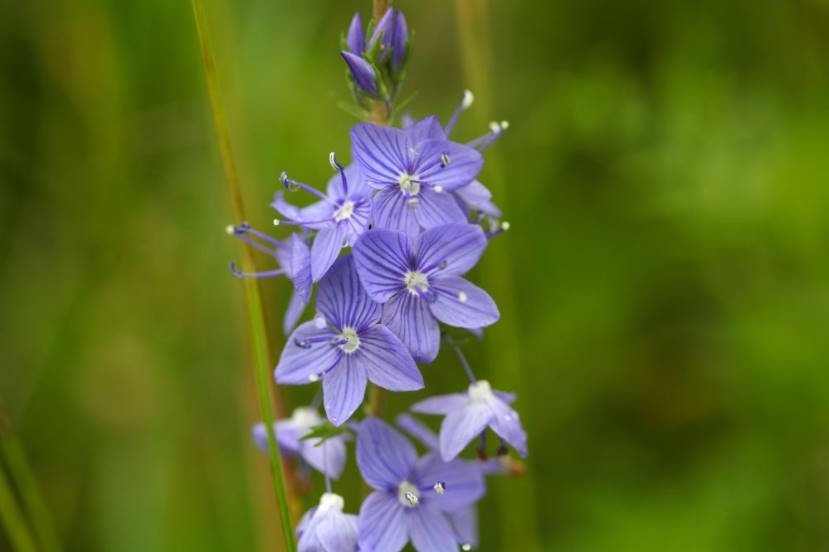
Inflorescence of Veronica
Basically, all Veronica – herbaceous plants, but there are shrubs. More often perennial, but there are annual. Look, some high, others low and even creeping, leaves usually simple, are often opposite, but sometimes another location.
Veronica shares the structure of the flower. They are usually small, the lower petals are fused and form a tube, the upper petals are not grown. Inside the flower are two stamens and a long pistil. Flowers are not single – they form inflorescences in the form of spikelets or brushes.
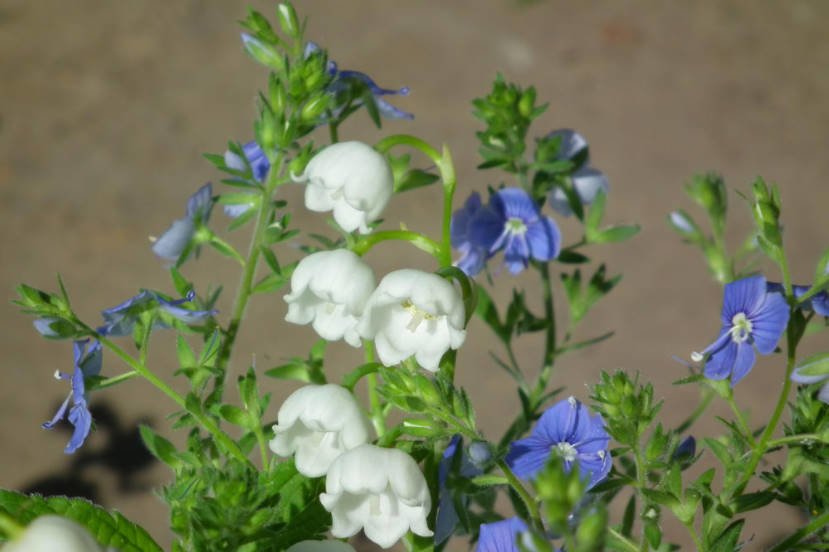
Veronica and lilies of the valley
And, of course, color: almost all plants have different shades of blue flowers, and only occasionally pink or white colors. When the plant blooms, the flowers are replaced by fruit-boxes with seeds.
In the wild, it can be found at the edge of the forest, among meadow vegetation. Some species prefer mountainous terrain.
Types and Varieties
And now let’s get acquainted with those kinds of Veronica, which are mainly grown for decorating the garden.
Veronica Spike
View Veronica spicata is quite widespread. In our country it grows and in the European part, and in Siberia, Central Asia, the Caucasus, also lives in Western Europe and the Mediterranean.
The plant is low (up to 40 cm – 1.3 ft), few shoots. The leaves are oval-oblong: the lower ones have petioles, and the upper ones are sessile. At the tips of the stems, a dense inflorescence is formed in the form of a brush up to 10-12 cm (5 inch) long with bright flowers. The flowers can be blue and pink, purple or white. Flowering begins in June and lasts about 40 days.
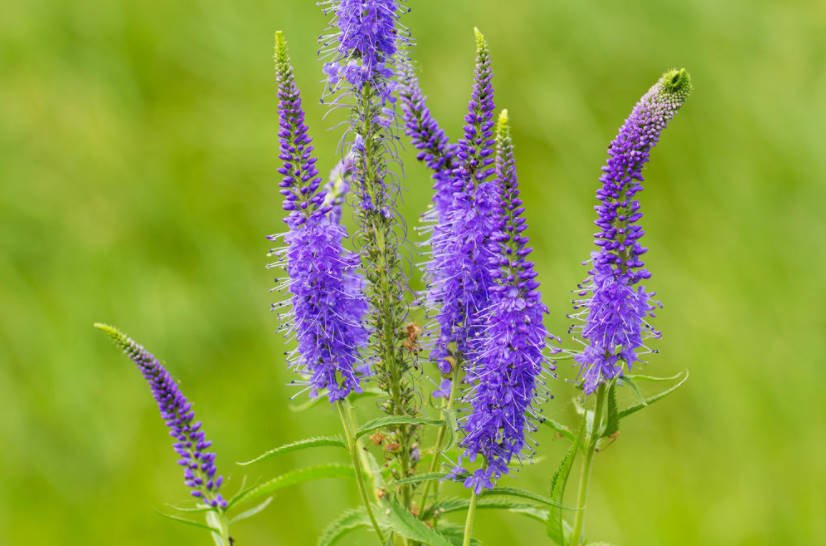
Veronica spike
This Veronica is beautiful in its original form. In the garden would be beneficial to look in the form of single clumps or in groups with other perennials. Prefers loose soil, likes a Sunny open place, drought-resistant and winter-hardy.
There are many varieties that differ mainly in the color of the flowers:
- Icicle (Icicle White) — white flowers;
- Barcarolle — pink flowers;
- Blue Peter – blue flowers;
- Blue Carpet – bright blue flowers, low-growing shrub;
- Red Fox – dark pink flowers;
- Romiley Purple – dark purple flowers;
- Heidekind-pink – crimson flowers.
Veronica Filiform
Veronica filiformis is a native of Europe. There it grows on mountain meadows, forming a continuous green carpet.
It is an evergreen creeping perennial. Very thin shoots quickly scatter in different directions, they have roots, cling to the ground, take root – and grow-run further, wider, in all directions. A beautiful green carpet with small round leaves is formed.
In spring, the entire carpet is covered with small pale blue flowers that rise above the greenery, as if floating in the air. The beauty is extraordinary! This species feels especially good in partial shade on poor soils.
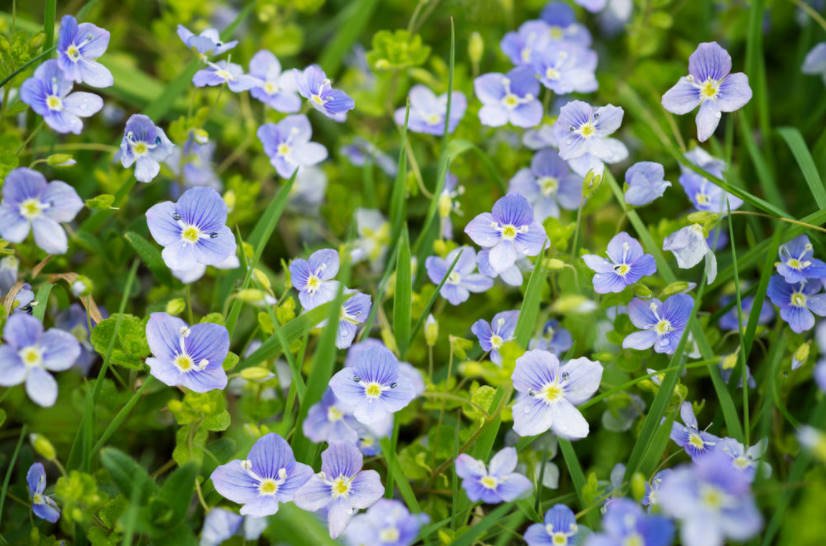
Veronica filiform
However, sometimes there are problems with this plant: sometimes it may not grow and only individual bushes remain. Knowing this feature, I planted several plots in different places, where it does not particularly bother me. It happens that in one place the plant is constantly dying, and in another it grows well.
In fact, many gardeners like it, and so, despite the slightly capricious nature of the plant, so many leave veronica in other more suitable places in their garden. It is suitable for rockery, as it is drought-resistant, although water-loving. You can create magnificent carpet arrays, or plant under berry or ornamental shrubs.
Veronica Teucrium
Common species – Veronica teucrium. It has creeping rhizomes located superficially. They grow many straight stems with a height of 30 to 70 cm (1-2.3 ft). Oblong serrated leaves sit opposite the edge. Bright blue flowers in racemes.
Blooms profusely in the spring, at this time the whole bush looks very beautiful. But gradually the shoots begin to fall away from the center, the bush seems to disintegrate. Therefore, it is advisable to tie it at the beginning of flowering and fix it with a stick. After flowering, it is usually recommended to cut the shoots so that they grow again.
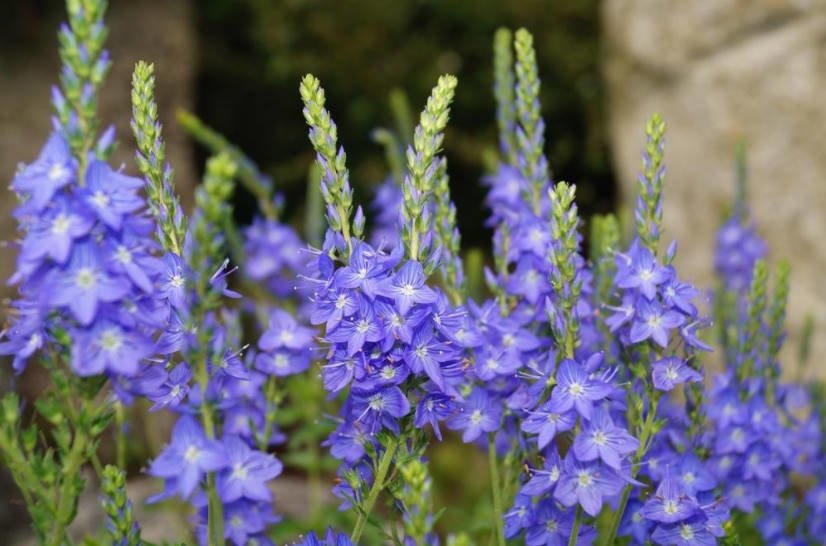
Veronica teucrium
Veronica is very unpretentious, but loves the sun. It has winter hardiness, undemanding to the soil. Varieties with different bush heights are bred:
- True Blue – bushes up to 60 cm (2 ft) tall, with blue flowers;
- Schirly Blue – bushes up to 50 cm (1.6 ft) tall, dark blue flowers.
Veronica Incana
Also widely distributed Veronica incana: in Western Europe, the far East, Japan and Korea. This variety, 40 cm (1.3 ft) high, first has a spreading shape, and after flowering it grows into a compact cushion, which is decorated with wide white-tomentose leaves.
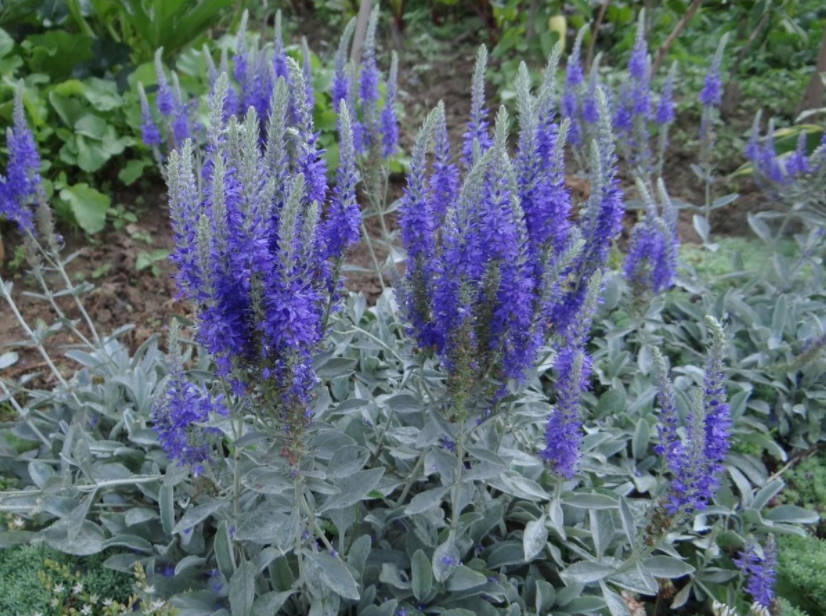
Veronica incana
Blooms from the end of July for 35 days with very bright blue inflorescences. The plant is unpretentious, winters without shelter, suitable for rocky gardens.
Veronica Gentianoides
Veronica Gentianoides is a more thermophilic species. The plant belongs to the group of pillow plants: it forms rounded bushes in the form of a pillow with a height of no more than 45 cm (18 inch).The leaves forming a rosette are lanceolate leathery. Pale blue flowers fill loose spike-shaped inflorescences on peduncles up to 30-70 cm (12-28 inch) high. Blooms from the end of May for two to three weeks.
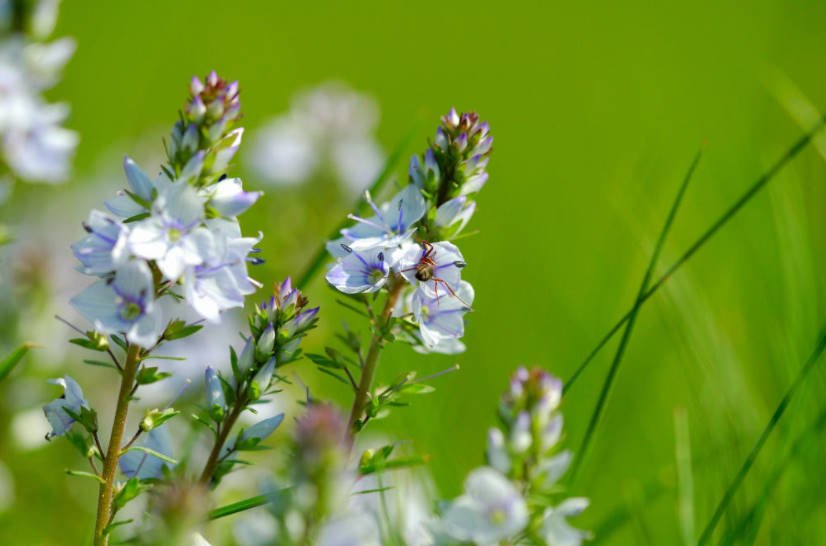
Veronica blooms
This option is very beautiful, but it also has varieties. Nana is a dwarf variety. The height of the pads is not more than 10 cm (4 inch), the peduncle is 20-30 cm (8-12 inch). In this variety, there is also a form of variegata with white-edged leaves, with edges, in spring it has a pink color.
Veronica Peduncularis
Mountain dweller-Veronica peduncularis. It rises from the warm coastal valleys to the mountains, where it grows on rocky scree. A perennial plant. Blooms with bright blue-blue eyes with whitish flowers on them.
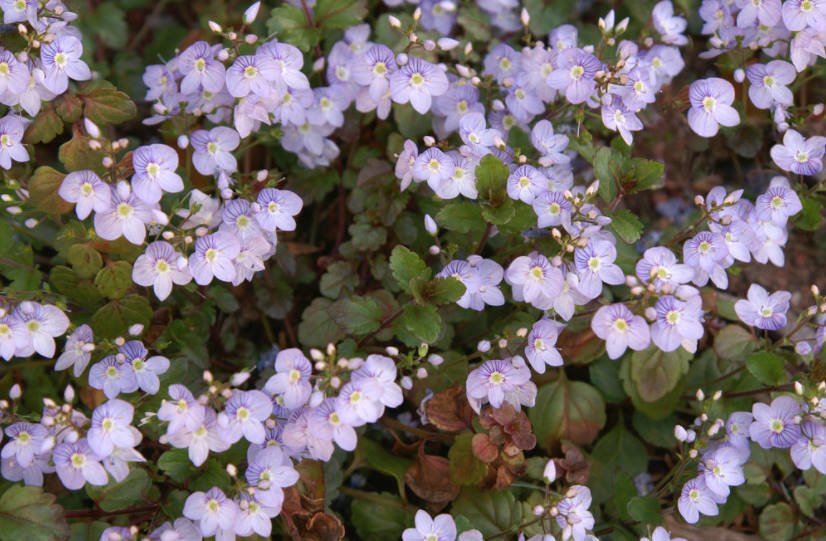
Veronica peduncularis
It is used in the landscaping of rockeries and rock gardens, has a variety of Georgia Blue. The flowers of this variety are very fragrant, the plant itself is drought-resistant and unpretentious in culture.
Veronica Armena
Veronica armena is native to Asia Minor. It is also an Alpine plant, whose short stems were thin and woody, pubescent, very numerous. Blooms pale blue or lilac flowers in late June. A fragrant plant, drought-resistant and very unpretentious. The substrate prefers stony, with the addition of clay. In rockeries and alpine slides, this is the most suitable place.
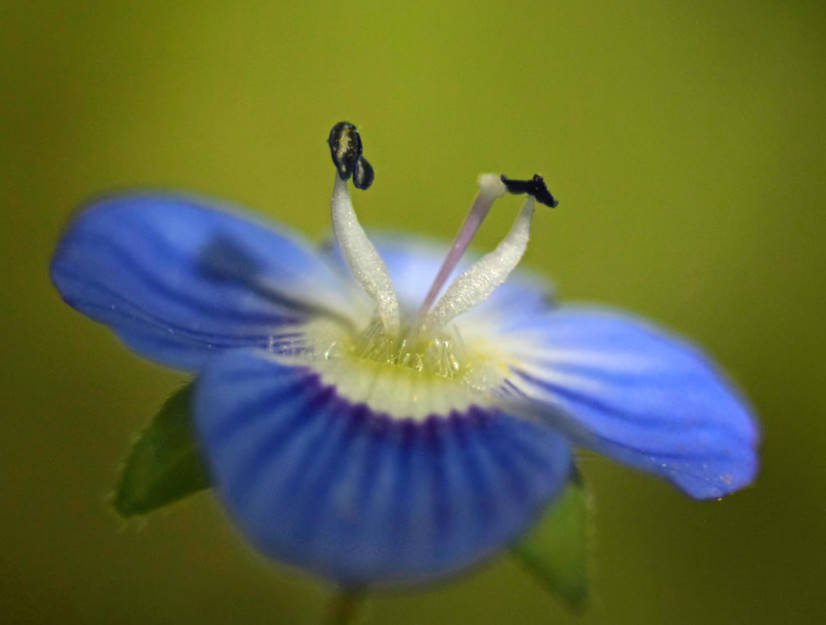
Veronica armena
This is just a small overview of some of the most popular species used in gardening.
Caring for
Depending on the habitat in the natural environment, Veronica requires certain conditions when growing in the garden. For veronica spikelet large or filamentous, the most common garden plots with a small addition (if possible) of gravel or sand are suitable. The place can be chosen as open and sunny, or semi-shaded.
The plant is very undemanding, does not require special care, in winter they are not covered. After flowering, they are usually cut off, and then this again quickly increases the green mass. Most species are drought-tolerant, so even watering them is not required.
Reproduction
Veronica can be propagated vegetatively and by seeds. The easiest way is to divide the bush. For this purpose, a large bush will be suitable to dig them out with the buds. The best time to divide is in spring, when the plants have just begun to grow.
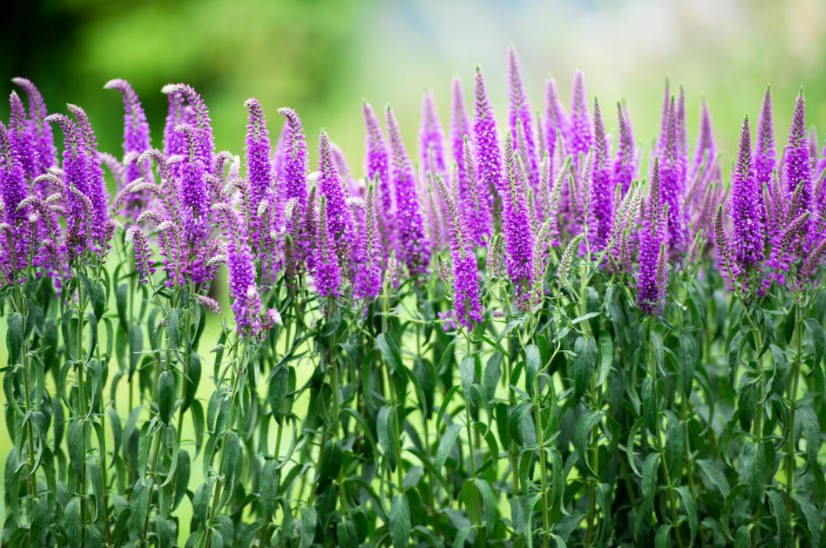
An array of Veronique
It can also be propagated by cuttings that take the tops of young shoots. Cuttings take root in the shade in loose, moist soil. Seeds are best sown in winter, flowering occurs in the second year.
Garden Decoration
Speaking of different varieties, I have already said that some types are suitable for rock gardens, rockeries and retaining walls. Others are excellent ground cover, forming a solid green carpet or dense sod pads. It also looks good on the shore of a pond decorated with stones. In mixed borders, along with other perennials, it is best to use Veronica large rosehip and this will be an excellent vertical accent.
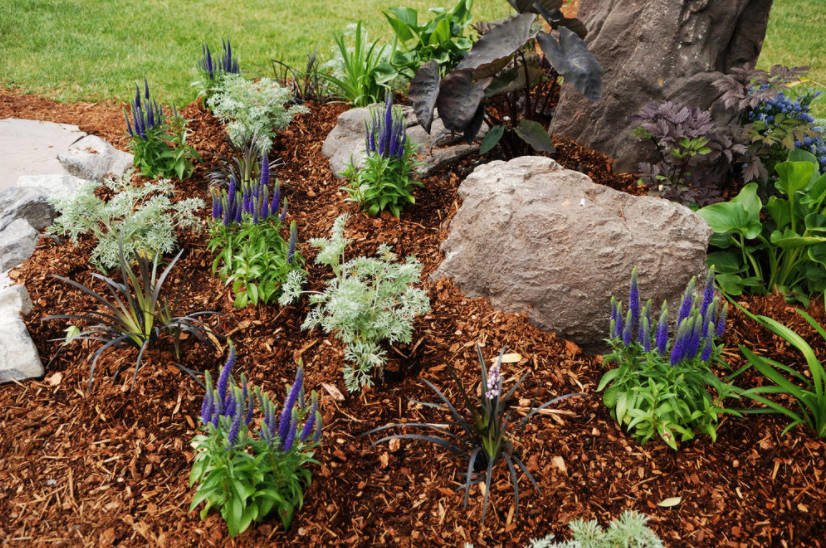
Veronica-pads
Personal Experience
There are now four species of veronica growing in my garden. The very first to appear was ‘Veronica Teucrium’. Well, the plant is very unpretentious: it has never been such that it does something unexpected. It grows slowly in May, amicably and profusely blooms with bright blue spike-shaped inflorescences. When it gets too big, I divide the lumps, plant them, and once I just put them in the compost. And for many years now, this flower pleases me.
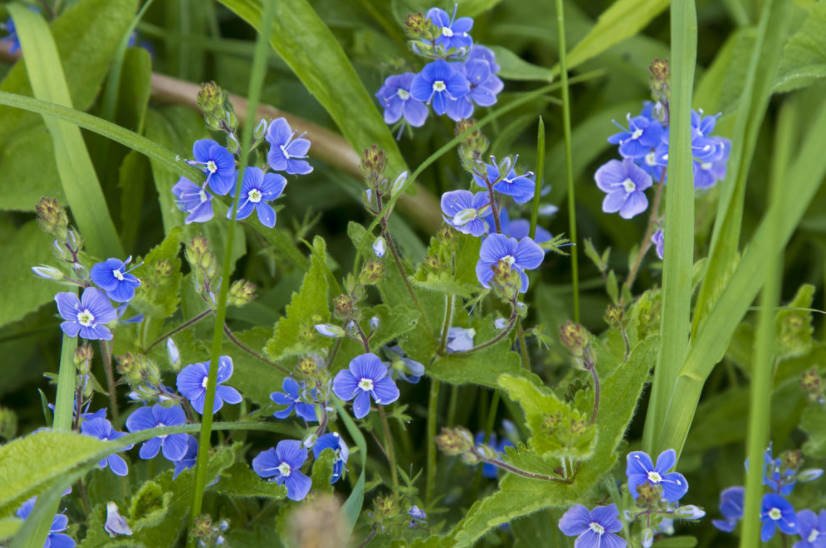
Veronica chamaedrys
